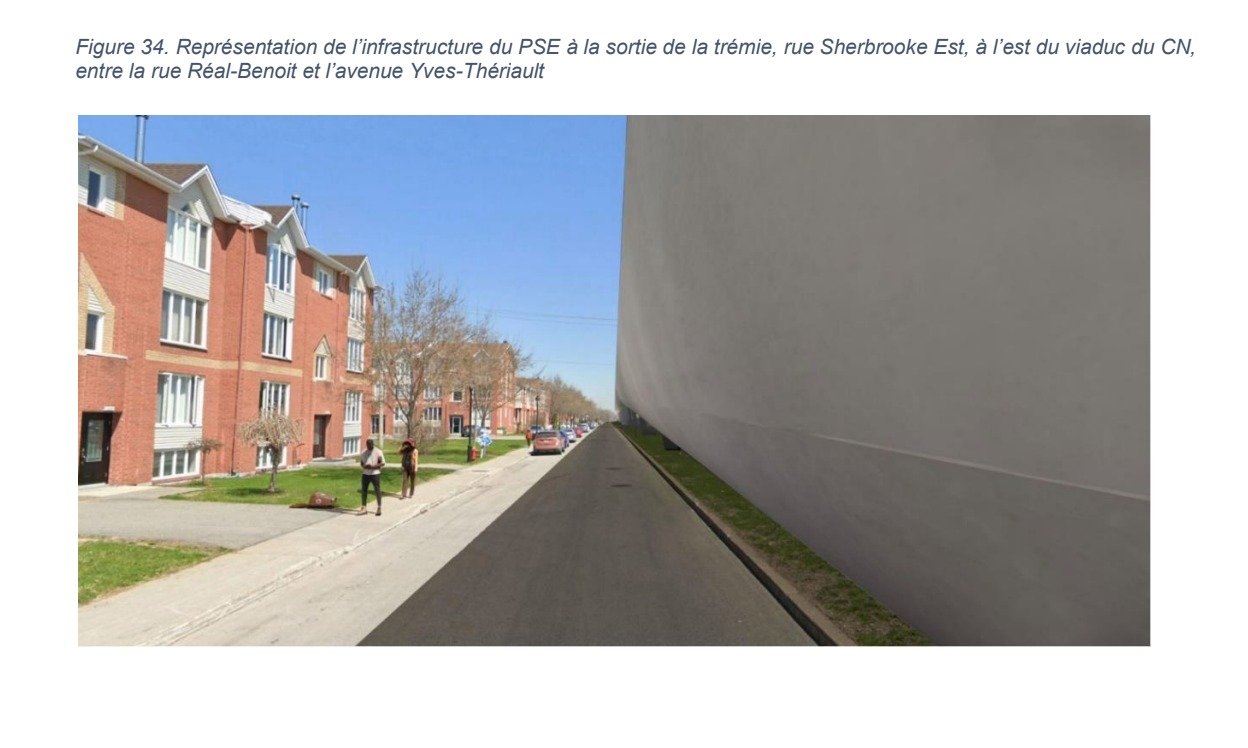Why are we even bringing up or looking at 70 year old 6 track mainline railway viaducts in Tokyo or the horrible decrepit crumbling steel viaducts of the Chicago L? These are not relevant to discussion of the REM on Rene-Levesque.
Because other posters specifically raised Tokyo and Singapore as favourable examples. I put Chicago forward simply to provide a North American offering other than Vancouver. Choice in that regard is sparse.
Here are some more relevant comparisons to make for elevated viaducts in dense areas:
In Vancouver, we have these:
Richmond, No. 3 Rd
- Runs beside the road, both sides flanked by dense residential and commercial development. ROW width at about 35m, which is actually much narrower than Rene-Levesque which is ~45m, but roadway width is similar to that proposed by CDPQ (4-5 lanes)
View attachment 489541
Right, so at least six lanes of traffic, not a vibrant high street, no heritage to speak of..........
Brentwood Town Centre:
- Median running but on a road of the same ROW width as Rene-Levesque, at 45m. Actual roadway here is 6-7 lanes, CDPQ had proposed 4-5 lanes for Rene-Levesque so there would be more space for pedestrians/cyclists on RL. Again, also flanked by dense development.
View attachment 489540
See comment above, this is not a heritage high street, this is 8 lanes of traffic plus the median.
While the guideway is not particularly problematic in either example above, this is only because the entire roadscape is both overly wide and ugly to start.
Neither of these pictures appeal to me in the least as a place I would want to walk, bike, shop, work or live.
And probably the best example, Beatrixlaan in The Hague:
- Side of road, similar to REM Est proposal
- 4-5 lane road with bidirectional cycle track, again very similar to REM Est proposal
- Surrounded by dense development in the center of The Hague
And yes, this viaduct has the striking architectural features, but to be fair the CDPQ proposal was not a plain concrete viaduct either - it had a curved bottom with split pillars - certainly still much more thought (and money) put into aesthetics compared to the standard Vancouver Skytrain viaducts.
View attachment 489539
This is one of the nicest examples you'll find, but also not a historical downtown type area. Truthfully, for all the artfulness of the Guideway, I think this picture lacks much charm.
But anyway, this whole discussion is also kind of moot because most of the NIMBYism was not even from downtown but from further east along Rue Sherbrooke and Rue Notre Dame, in places that look like the pictures below. Having to bury the line in downtown probably would not have completely killed the project (after all REM A had similarly complex works in downtown), but having to bury the line out here was what really killed the project.
Which is what I advocated for.........and my argument is that NIMBY'ism won here because of the overreach w/the downtown segment and insufficient understanding of the need to mitigate and sell the project.
You need social license and it wasn't forthcoming here.
The above is arguably as a good a spot to go elevated as you'll find (though pretty darn good for shallow cut and cover too) .
I'd be fine w/it here, on the understanding that this stretch of road is not now walkable (actually lacks sidewalks); but would also never become that pedestrian paradise (which is fine, not everywhere will be).
The above here is actually more problematic. First, look at how narrow he sidewalks are now. That would never pass muster w/today's guidelines. No cycling facilities, if you remove the middle 2 lanes for a guideway, and then the outer 2 lanes for adequate sidewalks and cycle tracks, you're down to one lane each way. On a road with lots of curb cuts and driveways too.
I'm very pro transit and building it cost effectively, but this looks challenging to create a reasonable outcome.
****
If one were to dead set on going elevated, I wonder why you wouldn't just follow the current/former CN Souligny ROW all the way? I know the initial modified CDPQ proposal included a short portion.
But it runs pretty much parallel to Rue Sherbrooke the whole way, just ~500m over.
To me, this looks a lot more logical that running over road:









;Composite=(type=URL,url=https://images.radio-canada.ca/v1/assets/elements/16x9/outdated-content-2023.png),gravity=SouthEast,placement=Over,location=(0,0),scale=1)